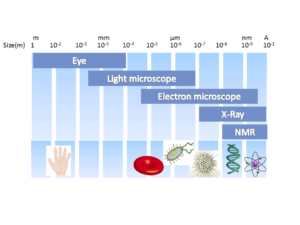Cryo-EM Methods
Overview

Single particle analysis and electron crystallography are applicable to samples that can be biochemically isolated. These samples require high purity as well as a high degree of structural homogeneity. These are the techniques that produce the highest resolution, which can approach atomic resolution in favorable cases. Fitting atomic models to the resulting structures is a common approach for interpreting the resulting structures and interactions between domains or subunits of a larger assembly. Electron tomography can be used to visualize highly-complex and heterogeneous samples, such as tissue sections, or assemblies such as liposomes. The resolution achieved with electron tomography is lower, but still sufficient for evaluating the topology of organelles or distributions of macromolecular assemblies across the surface of a virus.
Single particle analysis
For large and dynamic macromolecular assemblies (>100 kDa) that are generally challenging to crystallize, electron microscopy is well suited for structure determination. The most commonly used cryo-EM method is single particle EM, an approach that relies on the ability to collect a large number of images of homogeneous (shape and composition) molecules trapped in various orientations in the vitrified ice layer. 3D reconstruction requires a large data set (several thousand images) of 2D projections. This data set will be aligned and averaged to obtain high signal to noise ratio.
Electron crystallography
A two-dimensional crystal array is commonly formed by membrane proteins. Typical examples are bacteriophodopsin and aquaporin. Due to their thinness, these crystals are not amenable to structural studies by X-ray crystallography, but suitable methods to extract structural information using cryo-electron microscopy have been developed since the 1970’s. Another new method is MicroED 3D, that allows the collection of high-resolution electron diffraction data from extremely small protein microcrystals using cryoEM.
Electron tomography
For heterogeneous samples, low to mid resolution information can be obtained using procedures called tomography. In this method a tilt series of micrographs are collected to obtain 3D volume. For multiple copies of a sample sub-tomogram averaging can be used. Like single particle analysis, sub-tomogram averaging combines identical elements to increase SNR.

You must be logged in to post a comment.